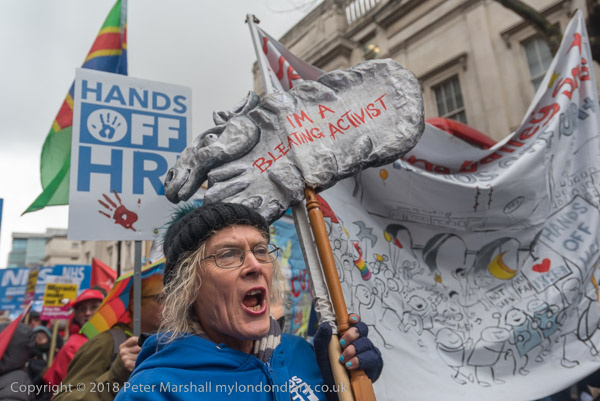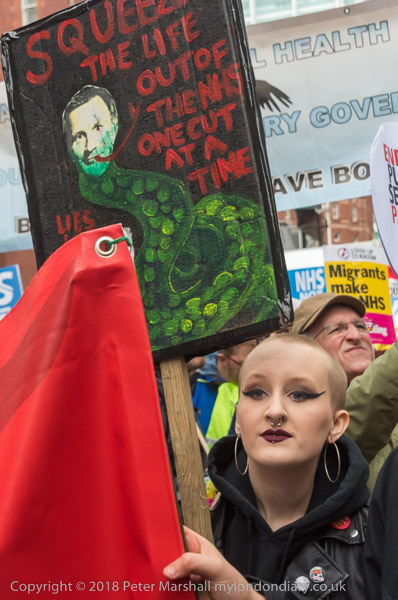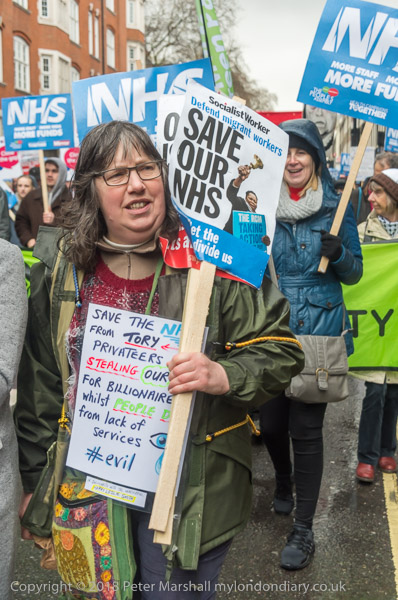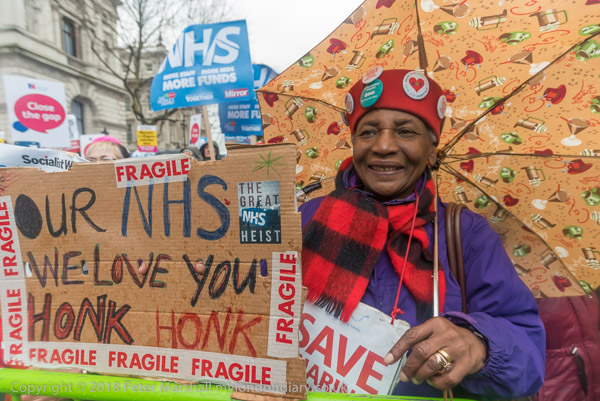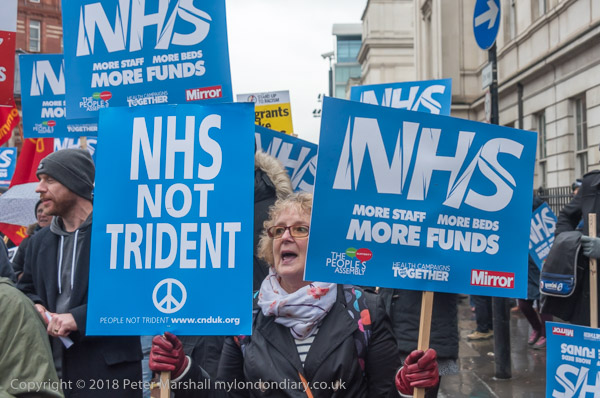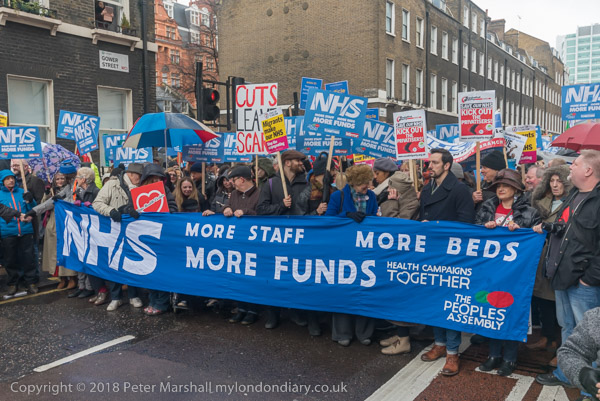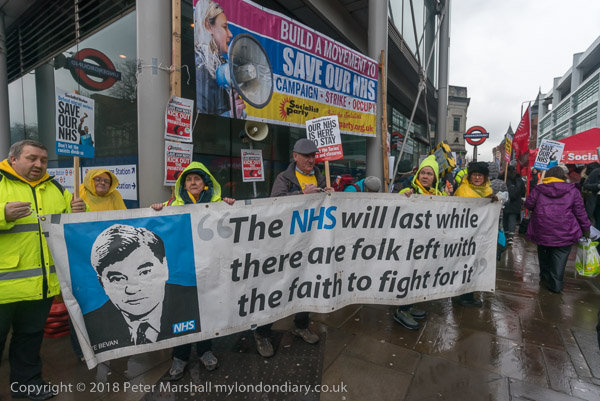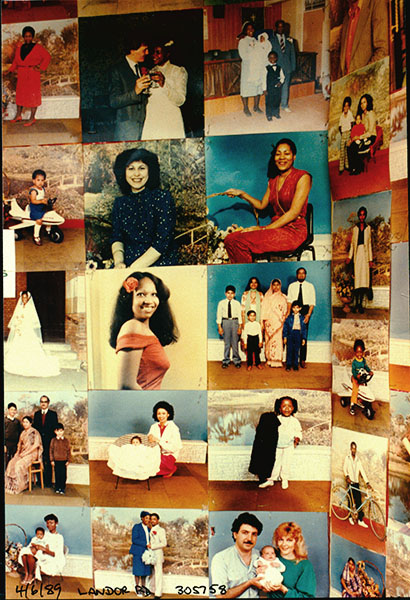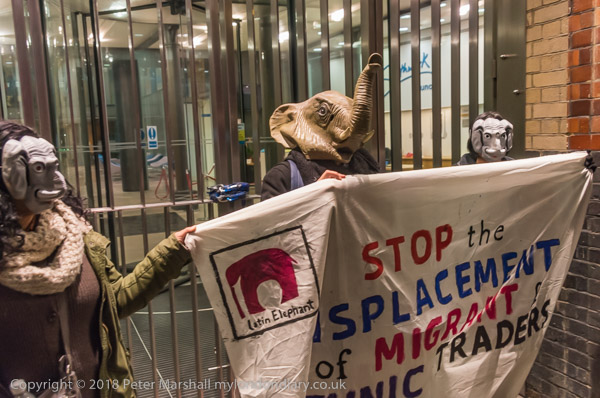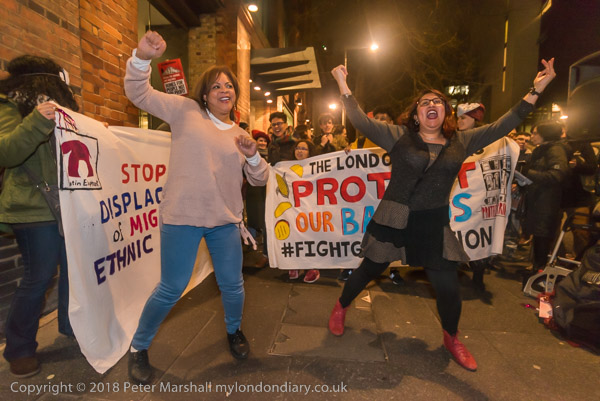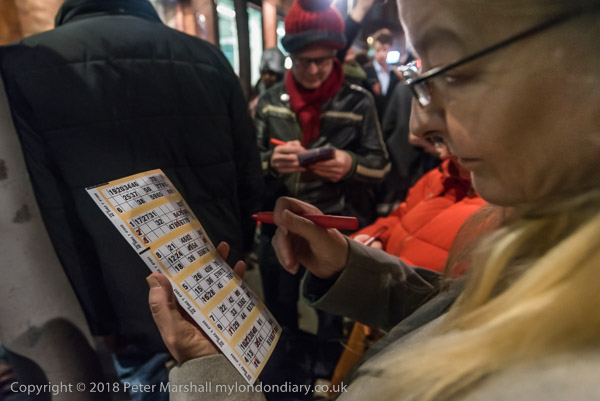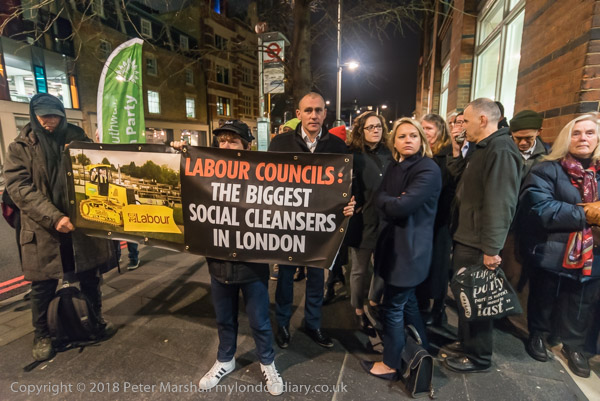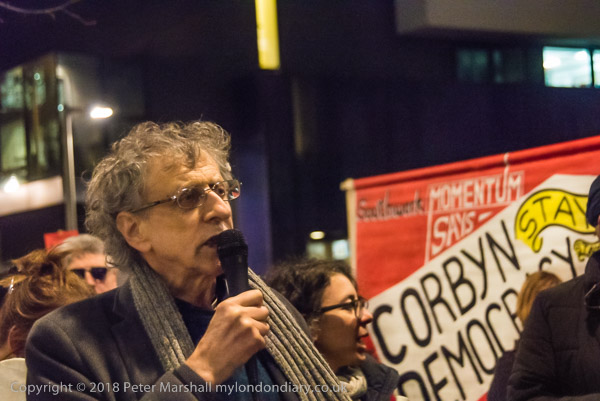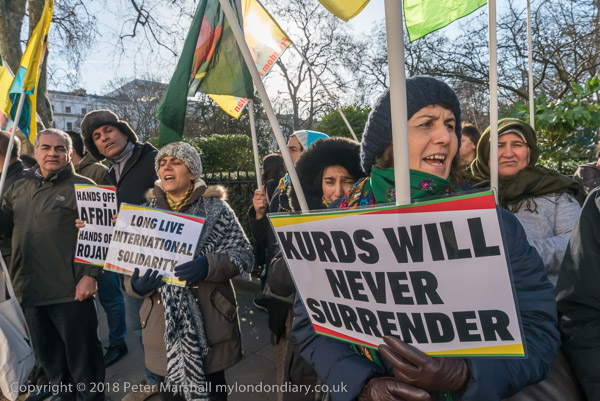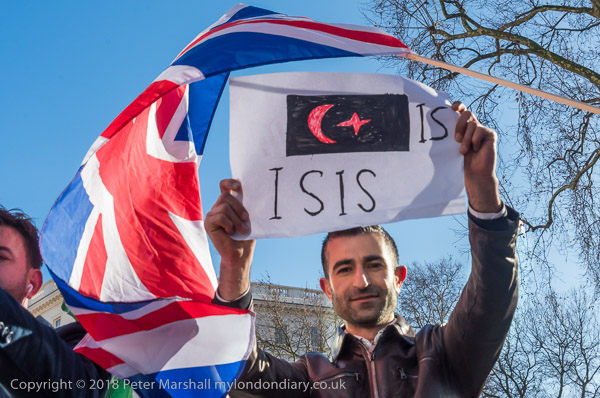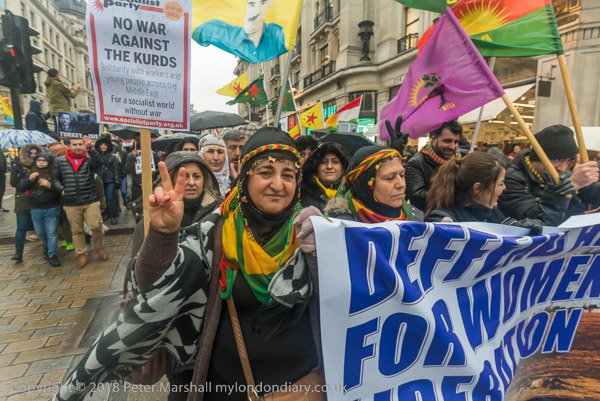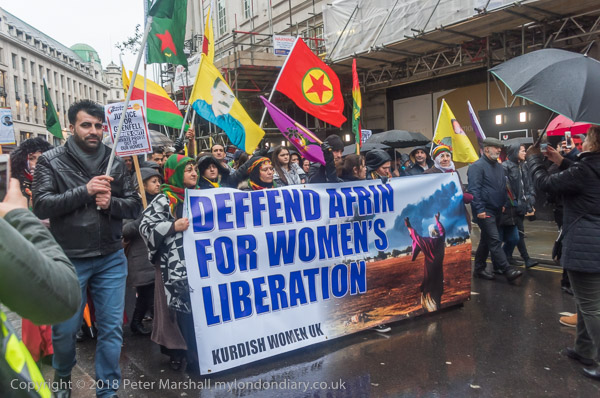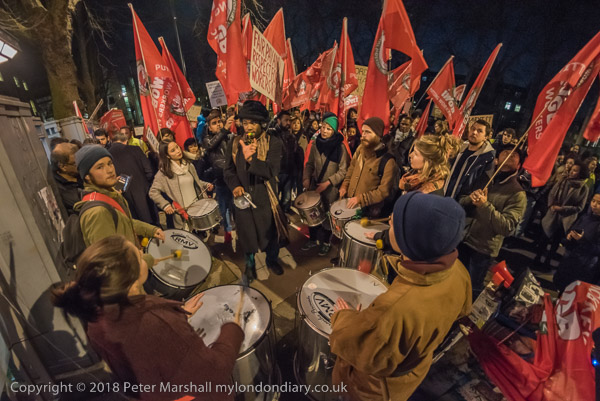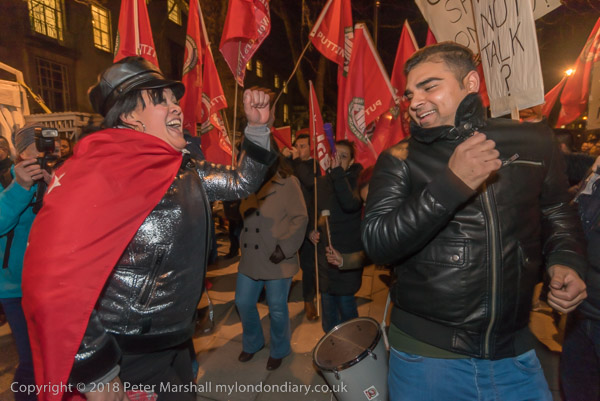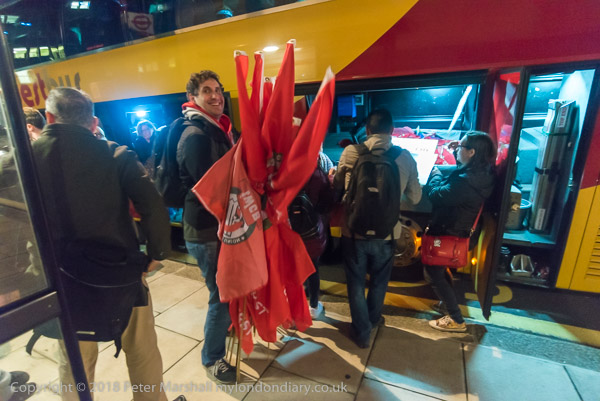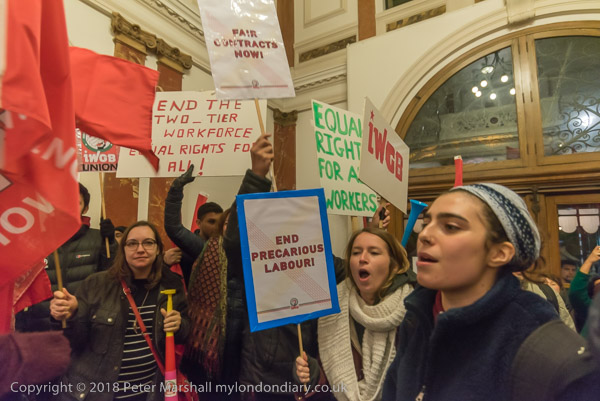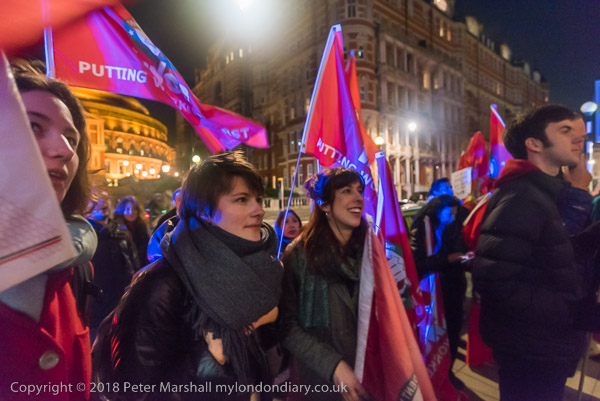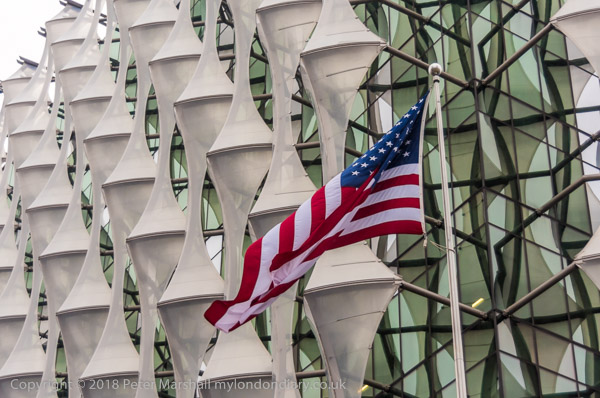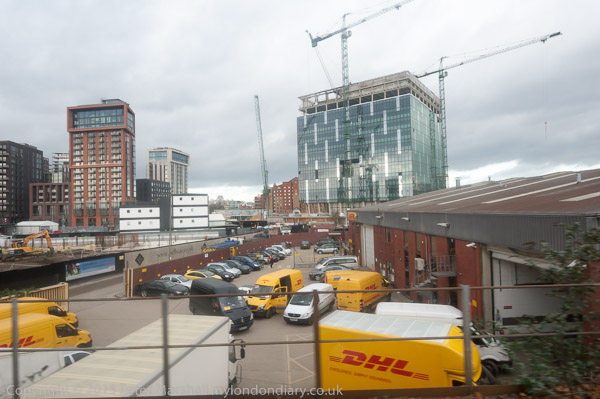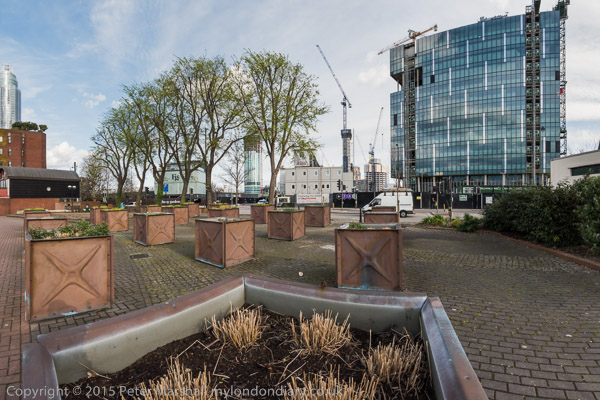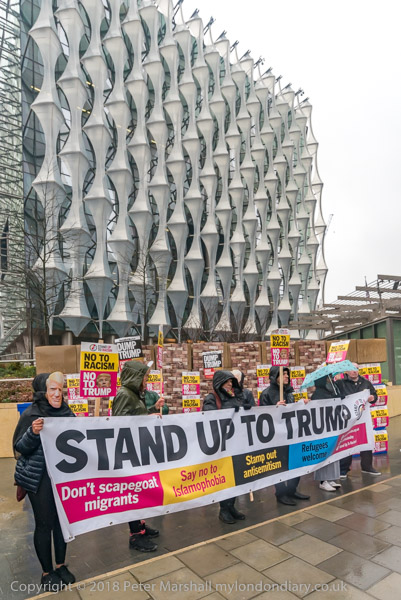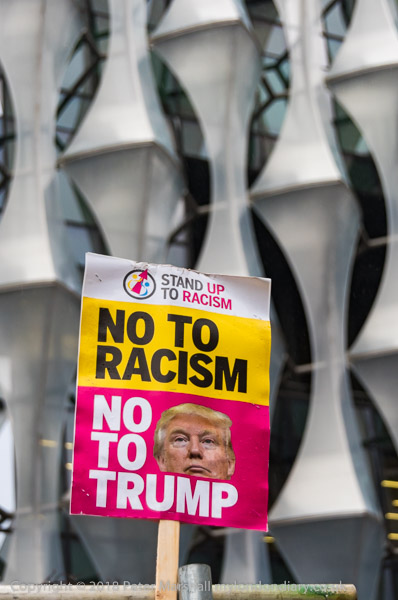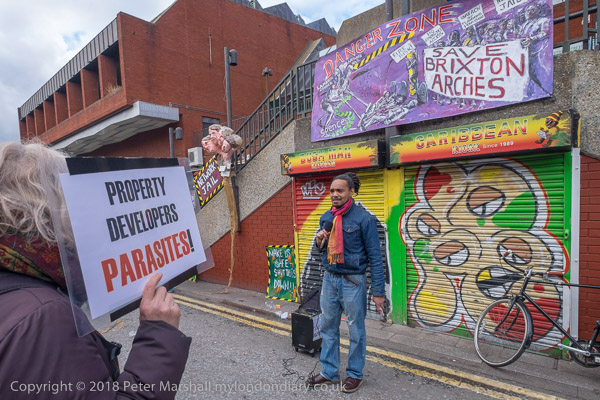
The campaign to save the Brixton Arches, or rather the 39 traders with businesses in the arches and kiosks under the railway line between Atlantic Rd and Brixton Station Road began around three years ago, when Network Rail announced their plans to “regenerate” the area.
These businesses, some of which had been going since shortly after the war, have been a vital part of the ‘heart’ of Brixton, in the centre of its market area. Mostly they sold useful things – like fish, carpets, tools, fabrics, white goods, along with down to earth cafes etc. Prices were generally keen and the businesses served the neighbourhood.
Network Rail’s regenerations plants aren’t for a major change in the structures. A railway arch is a railway arch. They will strip them out, put in new floors, replace electricity and water pipes, but the properties will remain basically the same. But the rents won’t.
Their plan enables them to evict all the tenants, ending their tenancy agreements. And after their limited work to increase the rents. To actually TRIPLE the rents.
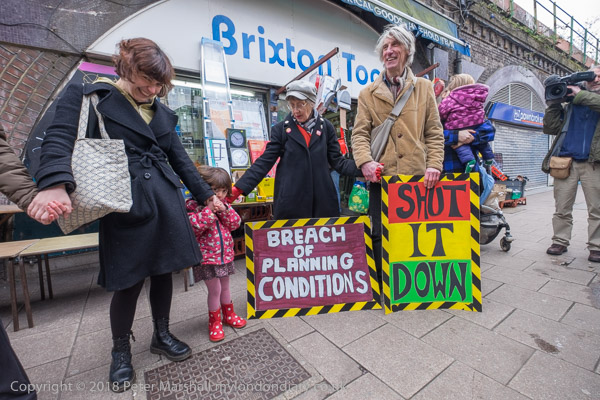
Some of the existing tenants were offered places after refurbishment. William Hill and H&T Pawnbrokers are apparently being allowed to stay in place while their premises are being refurbished – presumably they came to an agreement on the rent hike. Only 9 of the other businesses have been offered space in the refurbished arches, less than 25%, though Network Rail have always claimed it would be 75%, a figure obtained by excluding traders and sub-tenants who were in the majority from their calculation.
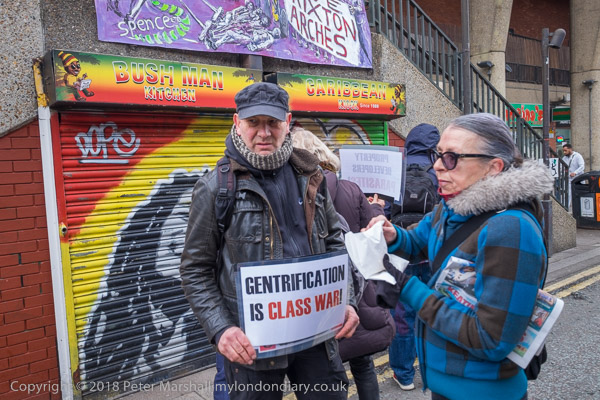
The actual number who return will almost certainly be less. Few businesses can survive the long gap in their operations, and probably few will be able to afford the new higher rents. Probably over 80% of them will be new businesses, which will need to work with high margins to meet these rents. Shops which will cater to the richer younger population moving into Brixton and changing its nature. Gentrification.
Has the fight for a little over three years – it finally ended early in April – which this protest celebrated been worthwhile? Although the battle has been lost, (and given they were fighting both Network Rail and Lambeth Council this was always almost inevitable) there have been some gains.
Network Rail wanted all of the occupants out of the arches with no right to return. Nine isn’t a huge number but it is nine more than zero. And while the three quarters who are new businesses will pay the tripled rents from the start, those who return will see the increase to these levels taking place over seven years.
During the fight, businesses were able to keep trading, some for a matter of months, but the final three managed another 3 years of trading. And tenants who had only been offered statutory compensation later received significant discretionary payments.
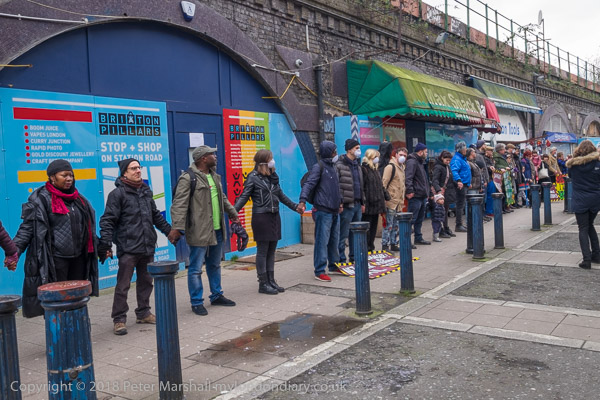
It’s also a battle which has united many in the community, and which will perhaps make Lambeth Council a little more cautious and almost certainly delayed for a year or two their long-term project for the gentrification of Brixton. But there will be more fights coming up before long unless we see significant reform in the local Labour party.
More on My London Dairy at Save Brixton Arches: 3rd Anniversary Action
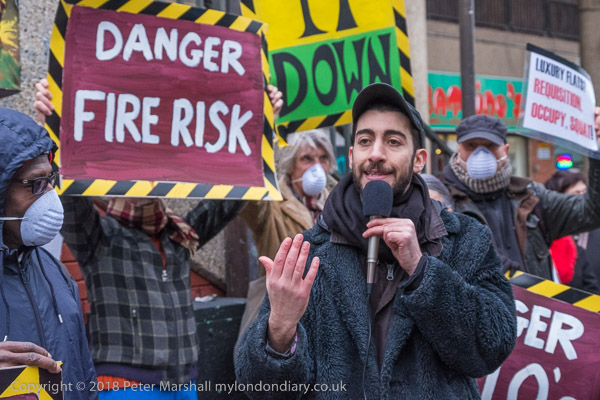
Introducing the event was spoken word artist Potent Whisper, who you can see speaking at it on YouTube. His book ‘The Rhyming Guide to Grenfell Britain‘ includes ‘Save Brixton Arches’ which you can also watch on YouTube under the title ‘#OurBrixton‘.
______________________________________________________
There are no adverts on this site and it receives no sponsorship, and I like to keep it that way. But it does take a considerable amount of my time and thought, and if you enjoy reading it, a small donation – perhaps the cost of a beer – would be appreciated.
My London Diary : London Photos : Hull : River Lea/Lee Valley : London’s Industrial Heritage
All photographs on this and my other sites, unless otherwise stated, are taken by and copyright of Peter Marshall, and are available for reproduction or can be bought as prints.
To order prints or reproduce images
________________________________________________________
